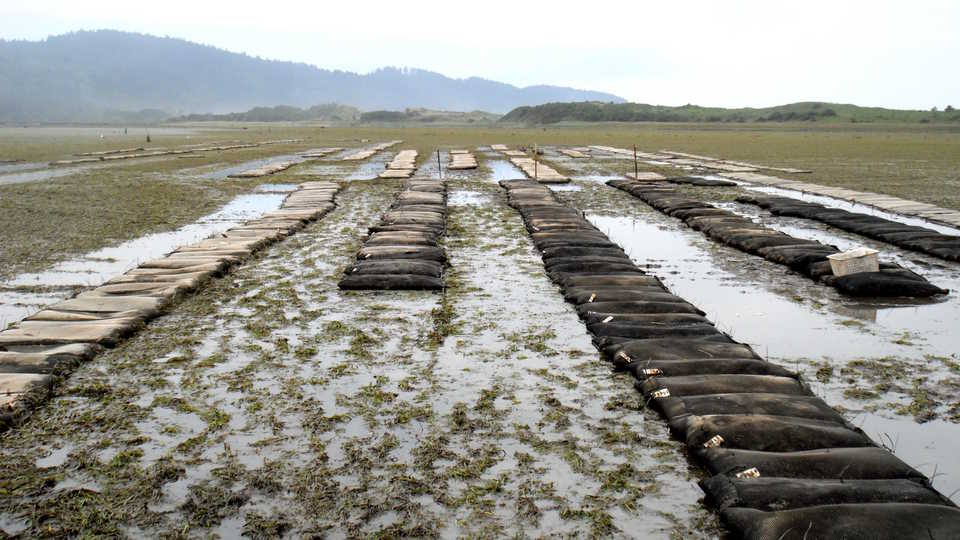Science News
Ocean Acidification: Local Risks and Solutions
Climate change, global warming: we know the common descriptors for how humans have been altering our environment. But it might as well be called “sea change,” because 25% of all the carbon emissions that we pump in the air actually dissolve right back into the water that covers 71% of our planet, creating an acidic mix not unlike carbonated soda.
This process of ocean acidification has well-known effects on coral reefs. Off the coast of the United States, oysters, clams, and other edible bivalves have hard calcium shells that, like coral, slowly dissolve and weaken in the slightly acidic environment now present in our oceans. As the acid levels go up, the health of our shellfish goes down, and fewer are available to eat: not good if you’re in the chowder business.
Julia Ekstrom, Director of the Climate Adaptation Program at the UC Davis Policy Institute, wanted to know how vulnerable our shellfisheries are to ocean acidification. “Ocean acidification has already cost the oyster industry in the U.S. Pacific Northwest nearly US$110 million, and directly or indirectly jeopardized about 3,200 jobs,” she writes in the latest issue of Nature Climate Change, where she and her colleagues assembled research outlining the economic possibilities for every inch of coastline in the United States.
What makes her study so complete isn’t just the data about the health of our oceans, but the risk factors on the adjacent shores. With so many countries contributing to carbon emissions, the best bet may be to assess local factors for change: issues we can control. Ekstrom not only used computer simulations to predict future acidification from carbon dioxide, she also assessed the strength of local seashores, considering factors such as reliance on the shellfish industry, adaptability of the workforce, accessibility of scientific knowledge (in nearby research institutions and nature preserves), and even state and national policies.
On the county level, Ekstrom found that high rates of acidification in places such as Alaska sometimes had the most workforce flexibility. And while the Gulf Coast and New England are at low risk in the long-term, the locals are heavily reliant on income from shellfish and have fewer other options for employment. California, Oregon, and Washington coastlines are acidifying quickly and have regions of low social mobility, but these states have the most robust research and environmental protections. The Pacific Northwest, in particular, has monitored the situation and even bred oysters so that they could prevent the “collapse of the regional oyster industry,” according to the paper.
But the model adopted on the west coast is just one solution provided by these researchers. Ekstrom also suggests “reducing marine ecosystem exposure to [ocean acidification]” by managing eutrophication: extreme algal blooms caused by an influx of nutrients from land, usually fertilizers, that can increase dissolved carbon dioxide and throw off the ocean’s natural ability to buffer against sudden increases in acid. While reducing fertilizer use is a big task, the authors insist that it’s a “no-regrets option,” as nitrate runoff from farms has greater negative environmental effects outside of ocean acidification. And in the Gulf Coast, where most of the mollusk fishing relies on the eastern oyster, diversifying the harvest can protect fishermen and the environment from sudden collapse.
Ekstrom’s research is unique not just for its large scale but for the inclusion of economic factors into her assessment. While billions on our planet rely on seafood as a source of protein, and almost half of the entire human population lives within fifty miles of the seashore, the best incentive for change may be economic. Studies that link human impact on the environment to our own well-being as a species and as individuals will have the best chance at inspiring action on a global scale, keeping delicious shellfish on our plates and in the oceans for generations to come.
Images: Oysters, Rick Friedman; Oregon aquaculture, Becky Mabardy

